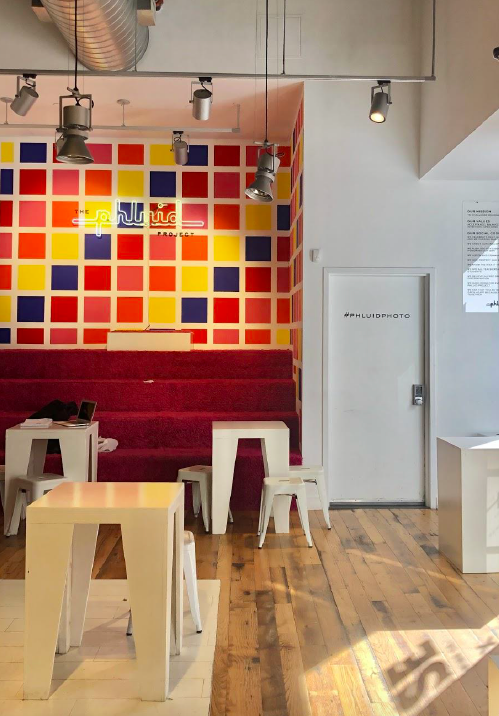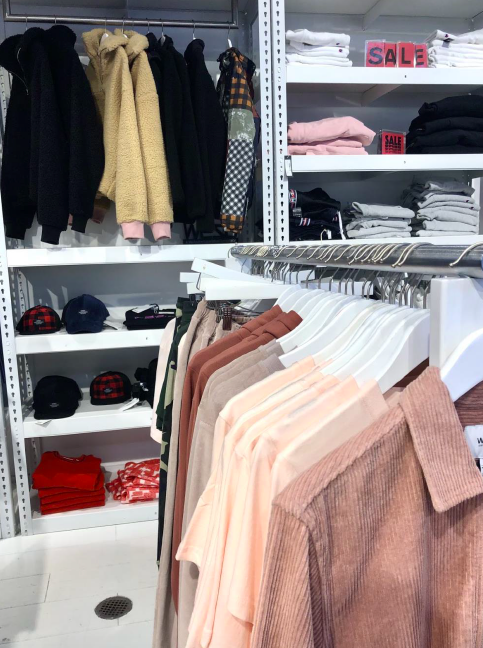Gender Fluidity in the Fashion Industry: A Step Forward, or a Superficial Phase?
By Sabrina Romviel
When 25-year-old model Madison Paige came out as nonbinary in 2017, their career took off. What followed were campaign deals with big brands including Abercrombie & Fitch, 7 For All Mankind, and Coca-Cola. With almost 300,000 Instagram followers, Paige’s online presence is marketing candy: with LBGTQ+ activism on the rise, brands must catch up to stay “woke,” desperate to expand their market to socially progressive consumers. Though the inclusion of gender non-binary models like Paige in big-name campaigns is certainly a step forward for LGBTQ+ representation, the rather hasty grab at new talent with no real commitment to LGBTQ+ justice seems like more of a diversity ploy than anything else. This then leaves us questioning whether it’s as much of a high-fashion fad as the male romper.
A Vogue article published in 2017 highlights the top designers creating gender atypical collections, including Alessandro Michele, creative director of Gucci, and his ‘radical’ move to dress Gucci girls in boxy suits and Gucci boys in floral dresses at Milan Fashion Week. An even more “shocking” step is Gucci (among other designers like Calvin Klein and Miuccia Prada) announcing that they would incorporate men’s and women’s collection together on one runway. Though it may seem monumental for big names in fashion to turn their heads from the fashion industry’s traditional guidelines, the publicity these brands receive for their pseudo-progressive philosophies leaves a gaping hole where legitimate LGBTQ+ advocacy should be.
Other than to increase their revenue by attracting socially conscious customers, designers at fashion week and in further campaigns and editorials show no true intention behind their gender non-conforming collections. Maybe the profound new rules of un-gendered fashion allow conservative shoppers to justify seeing a floral print on a pair of men’s shorts at Saks, but celebrity campaigns for the new collections do not call attention to the struggles that LGBTQ+ members face daily when shopping for clothes. They also neglect to shed light on the activists that brought fashion to a more gender-free space in the first place. Though some may argue that featured celebrities such as Jaden Smith in Louis Vuitton’s womenswear campaign or Pharrell Williams in a blazer and long pearls on a Chanel runway are important allies to LGBTQ+ community’s fight for representation in fashion, others like Gigi Hadid and Zayn Malik should not feel justified in speaking for the increasing acceptance of gender androgynous clothing. Gigi, as quoted in the July 2017 Vogue article, borrows from her boyfriend Zayn’s closet, but does that mean any girl wearing her boyfriend’s sweatshirt is suddenly a catalyst for the non-binary paradigm shift?
Vogue’s fall 2017 issue describes the rise of gender-fluid fashion as “a terrific opportunity for play,”1 clearly communicated in the magazine cover of the cisgender Gigi and Zayn sporting funky, gender-bending looks. However, the presentation of the cover shoot fails to convey the significant difficulties faced growing up as a gender non-conforming individual. As described by Cosmopolitan’s gender non-conforming Jacob Tobia, the countless slurs they received on a walk down a New York city street while sporting a dress was nothing short of harrowing. Though high-fashion brands may not give Tobia the support they deserve, up-and-coming retailers in New York City are working to alleviate their frustrations as a gender non-conforming individual and fix the industry’s uncultured view of gender non-conforming fashion in today’s society.
The Phluid Project, founded in March of 2018, trademarks itself as the first genderless retail store in the world. Its founder, Rob Smith, created the store after a journey of self-discovery through Central and South America, which led to, as Smith reported to Very Good Light, “a vision of creating a space where gender didn’t matter.”2 The Phluid Project is located in Noho and acts as a community embrace of all things queer; from rainbow-embroidered shorts to events like Queer Comedy Night and a how-to on crop top cutting, Smith has fostered an environment of widespread acceptance of everyone who enters. This is much more comforting to gender non-conforming individuals than seeing the appropriation of their identities on a Vogue cover.

The back lounge area of The Phluid Project.
Photo by Sabrina Romviel
Jacob Tobia hosted the Phluid Project’s press review, remarking to Vox Media’s Racked about their struggles with gender courage on top of other self-esteem insecurities often faced in the dressing room. “I feel like I need my emotional support friends when I go shopping,” 3 Tobia stated, a wish that the open community of the Phluid Project most certainly fulfills. The Phluid Project’s staff member Bridget, the executive assistant to the head of PR, remarked that the company’s dedication to catering its merchandise to each individual customer and to providing an environment of warmth and acceptance in the store is of utmost importance. She proudly stated that “no matter what’s going on out there, there’s a space for everybody in here.” 4

A small section of the merchandise sold in The Phluid Project.
Photo by Sabrina Romviel
The Phluid Project’s confidence in their philosophy doesn’t come without some criticism. A common misconception people get from gender neutral and androgynous clothing design is that its absence of form-fitting pieces renders the clothing shapeless. While this is a sensible argument, especially when looking at a retailer like Zara’s genderless line of plain t-shirts and sweatpants (or even the Phluid Project’s section dedicated to boxy Champion sweatshirts and basketball shorts), we must remember that the absence of form-fitting clothes does not necessarily equal to gender-neutral clothing design. The Brooklyn based tailor, Bindle and Keep, is an example of a company dedicated to customizing a flattering fit for every body type. Much like The Phluid Project, they make the shopping experience of members of the LGBTQ+ community as welcoming and comfortable as possible.
Rachel Tutera and Daniel Friedman are the tag team behind Bindle and Keep. Tutera, who describes her identity to the New York Times as “a very tiny space that exists between being a butch dyke and being a trans man,”5 partnered with Friedman, primarily a suit tailor for men in corporate positions, to ensure gender nonconforming individuals with feminine bodies no longer have to decide between clothes that do not fit their physique or their identities. Men’s suits tend to fit too wide in the shoulders, while women’s suits are often made to accentuate the hips, so a customer wanting a suit with neither of these designs is constantly met with frustration at retail stores. Bindle and Keep provides a safe space for these customers to get fitted for a suit and finally feel handsome, confident, and gain a greater sense of self.
The dedication of The Phluid Project and Bindle and Keep towards LGBTQ+ acceptance is strong, unlike that of big name brands straining to appear “woke” in today’s mainstream media. Though large gender-neutral fashion campaigns raise awareness of gender non-conforming identities, they provide a reductive perspective of what it means to be a member of the LBGTQ+ community. It is the person-to-person support, provided by these New York City gender-neutral retailers, that yield a life-long impact on defeated customers’ senses of identity. So, Vogue, if you still want to expand your market of socially progressive LGBTQ+ advocates, your feature of two cisgender celebrities and their closet-swapping tales will not be enough.
REFERENCES
1 Maya Singer, “Gigi Hadid and Zayn Malik Are Part of a New Generation Who Don’t See Fashion as Gendered,” Vogue, July 15, 2017, accessed November 18, 2018, https://www.vogue.com/article/gigi-hadid-zayn-malik-august-2017-vogue-cover-breaking-gender-codes
2 David Yi, “The Phluid Project Is the World’s First Genderless Retail Store,” Very Good Light, April 9, 2018, accessed November 18, 2018, https://www.verygoodlight.com/2018/04/09/the-faces-behind-new-yorks-first-genderless-store/
3 Mitchell Kuga, “Gender-Free Shopping Is a Movement, Not a Trend,” Racked, March 22, 2018, accessed November 18, 2018, https://www.racked.com/2018/3/22/17148716/phluid-project-gender-neutral-shopping-retail-opening
4 “Interview with Bridget, Executive Assistant to the Head of PR at The Phluid Project,” interview by author, October 31, 2018
5 John Leland, “The Masculine Mystique,” The New York Times, October 19, 2018, accessed November 18, 2018, https://www.nytimes.com/2013/12/01/nyregion/custom-suits-to-make-transgender-and-female-clients-feel-handsome.html